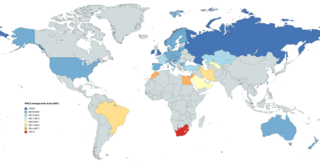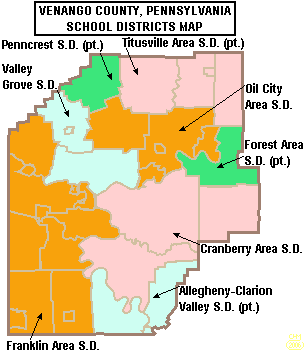
Phonics is a method for teaching reading and writing to beginners. To use phonics is to teach the relationship between the sounds of the spoken language (phonemes), and the letters (graphemes) or groups of letters or syllables of the written language. Phonics is also known as the alphabetic principle or the alphabetic code. It can be used with any writing system that is alphabetic, such as that of English, Russian, and most other languages. Phonics is also sometimes used as part of the process of teaching Chinese people to read and write Chinese characters, which are not alphabetic, using pinyin, which is alphabetic.

Education in Canada is for the most part provided publicly, funded and overseen by federal, provincial, and local governments. Education is within provincial jurisdiction and the curriculum is overseen by the province. Education in Canada is generally divided into primary education, followed by secondary education and post-secondary. Education in both English and French is available in most places across Canada. Canada has a large number of universities, almost all of which are publicly funded. Established in 1663, Université Laval is the oldest post-secondary institution in Canada. The largest university is the University of Toronto with over 85,000 students. Four universities are regularly ranked among the top 100 world-wide, namely University of Toronto, University of British Columbia, McGill University, and McMaster University, with a total of 18 universities ranked in the top 500 worldwide.
Educational assessment or educational evaluation is the systematic process of documenting and using empirical data on the knowledge, skill, attitudes, aptitude and beliefs to refine programs and improve student learning. Assessment data can be obtained by examining student work directly to assess the achievement of learning outcomes or it is based on data from which one can make inferences about learning. Assessment is often used interchangeably with test but is not limited to tests. Assessment can focus on the individual learner, the learning community, a course, an academic program, the institution, or the educational system as a whole. The word "assessment" came into use in an educational context after the Second World War.

The No Child Left Behind Act of 2001 (NCLB) was a 2002 U.S. Act of Congress promoted by the presidency of George W. Bush. It reauthorized the Elementary and Secondary Education Act and included Title I provisions applying to disadvantaged students. It mandated standards-based education reform based on the premise that setting high standards and establishing measurable goals could improve individual outcomes in education. To receive federal school funding, states had to create and give assessments to all students at select grade levels.
Education in Thailand is provided mainly by the Thai government through the Ministry of Education from pre-school to senior high school. A free basic education to fifteen years is guaranteed by the Thai constitution. This basic education comprises six years of elementary school and three years of lower secondary school. In addition, three years of pre-school and three years of upper-secondary education is available free of charge, but are non-compulsory.

Unionville High School is a public high school of the York Region District School Board in Ontario, Canada. It is located west of the community of Unionville in the city of Markham. The school is located next to the Markham Civic Centre and the Markham Theatre.

The IEA's Progress in International Reading Literacy Study (PIRLS) is an international study of reading (comprehension) achievement in 9-10 year olds. It has been conducted every five years since 2001 by the International Association for the Evaluation of Educational Achievement (IEA). It is designed to measure children's reading literacy achievement, to provide a baseline for future studies of trends in achievement, and to gather information about children's home and school experiences in learning to read.

The Etobicoke School of the Arts (ESA) is a specialized public arts-academic high school in Toronto, Ontario, Canada. Located in Etobicoke, it has been housed in the former Royal York Collegiate Institute facility since 1983. Founded on September 8, 1981, the Etobicoke School of the Arts has the distinction of being the oldest, free standing, arts-focused high school in Canada.
The Ontario Secondary School Literacy Test is a compulsory standardized test for secondary school students in Ontario who wish to obtain the Ontario Secondary School Diploma. For students who entered Grade 9 in 1999–2000, successful completion of the test was not a graduation requirement. However, for those students who took the field test of the OSSLT in 2000–2001, failed the test, and chose to retake the OSSLT in October 2001, successful completion of the provincial literacy graduation requirement became a diploma requirement. It is administered by the Education Quality and Accountability Office (EQAO).

St. Augustine Catholic High School is a Separate high school in Markham, Ontario, Canada. It is a technologically oriented school, is part of the York Catholic District School Board, and opened in 2001. As of September 2019, it had an enrolment of 1082 students and 80 faculty members. In the Fraser Institute's Report Card on Ontario’s Secondary Schools 2019, the school was ranked 12th out of 739 secondary schools in Ontario with an overall rating of 8.8 out of 10.
Adolescent literacy refers to the ability of adolescents to read and write. Adolescence is a period of rapid psychological and neurological development, during which children develop morally, cognitively, and socially. All of these three types of development have influence—to varying degrees—on the development of literacy skills.

Victoria Park Collegiate Institute ; formerly Victoria Park Secondary School, is a collegiate institute in Toronto, Ontario, Canada. It is located south of York Mills Road and west of Victoria Park Ave. in the district of North York. It is the first publicly funded school in Ontario to host the International Baccalaureate Diploma Programme. Authorized to offer the IB Diploma Programme since July 1987, the programme is taught in English. The school is open to male and female students. Some feeder schools include Milne Valley Middle School and Donview Middle School. The student population of Victoria Park Collegiate Institute is diverse, with a component of English as Second Language students.
Markham Gateway Public School (MGPS) is a public provincially funded school in the neighbourhood of East Milliken in Markham, Ontario, Canada. It is part of the York Region District School Board and is one of the six feeder schools of Middlefield Collegiate Institute.

The Cranberry Area School District is a small, rural, public school district which serves the residents of Cranberry Township, Pinegrove Township and Rockland Township in Venango County, Pennsylvania. Cranberry Area School District encompasses approximately 155 square miles (400 km2). According to 2000 federal census data, it serves a resident population of 9,698. In 2009, the per capita income of district residents was $16,307, while the median family income was $39,203 a year. In the Commonwealth, the median family income was $49,501 and the United States median family income was $49,445, in 2010. Per school district officials, in school year 2007-08 the Cranberry Area School District provided basic educational services to 1271 pupils through the employment of 115 teachers, 77 full-time and part-time support personnel, and 7 administrators. In 2006, the 1,308 student population was 98% white, 1% black, 1% Asian, Native American <0.1% and <0.2% Hispanic. The Cranberry Area School District received more than $9 million in state funding, for school year 2007-08.
Nora Frances Henderson Secondary School (NFHSS) is located at 1770 Upper Sherman Avenue in Hamilton, Ontario, Canada and is a part of the Hamilton-Wentworth District School Board. Originally opened in 1961 as Barton Secondary School, and originally located on 75 Palmer Rd., it had a September 2008 enrolment of 955, and had 28 primary languages spoken within the school by students aside from English. Barton Secondary School’s mission statement was "Educating students to become lifelong learners and contributing citizens in a challenging, changing, multi-cultural world." Students were required by Provincial Law to complete 30 mandatory credits and the Ontario Secondary School Literacy Test (OSSLT) within their secondary school career. Nora Frances Henderson Secondary School also offers special education classes as well as an ESL program. The HWDSB announced on May 24, 2012, that Barton Secondary School would be closed, along with Hill Park Secondary School and Mountain Secondary School with the students to be consolidated into a new, $25 million school.

The National Assessment Program – Literacy and Numeracy (NAPLAN) is a series of tests focused on basic skills that are administered to Australian students in Years 3, 5, 7 and 9. These standardised tests assess students' reading, writing, language and numeracy and are administered by the Australian Curriculum, Assessment and Reporting Authority (ACARA). The National Assessment Program is overseen by the Education Ministers Meeting.

In the United States, elementary schools are the main point of delivery of primary education, for children between the ages of 4–11 and coming between pre-kindergarten and secondary education.
Convent Glen Catholic School (CGCS) is a Roman Catholic elementary school in Orleans, Ottawa, Ontario, Canada.











